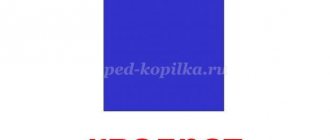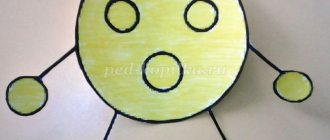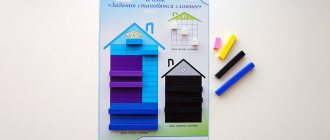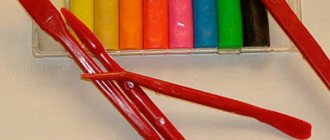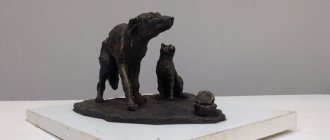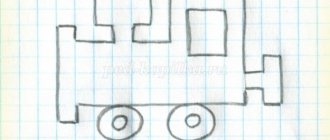At what age can you start learning geometric shapes?
A child’s knowledge of the world around him begins with his perception of objects and phenomena. At a very young age, children are not yet able to understand the shape of an object separately from itself. In fact, they experience them using various senses: not only by sight, but also by touch, as well as by pronouncing various words.
Study Kit
For your information! Comparison plays an important role in this process. Having seen a new object, the baby can determine whether it is similar to others already known to him.
In the process of development, a child perceives the geometric shape of objects differently. Small children see and feel them as a whole, without highlighting the shape. That is, each ball is not a ball for them, but a special object.
At an older age, the baby can already compare objects, determining their similarity or difference. Gradually he learns to properly highlight the elements of the form. In older preschool age, he already understands what a geometric figure is and what properties it has.
However, the development of geometric perception and thinking does not occur automatically, but through the learning process.
It is important to note that obtaining initial geometric knowledge and learning to count is for informational purposes only. At the same time, there is no systematic study of geometric knowledge. No precise definitions are considered at this time.
Important! In the process of studying, children learn to recognize and study figures, draw them, and describe them in Russian.
Geometric bodies
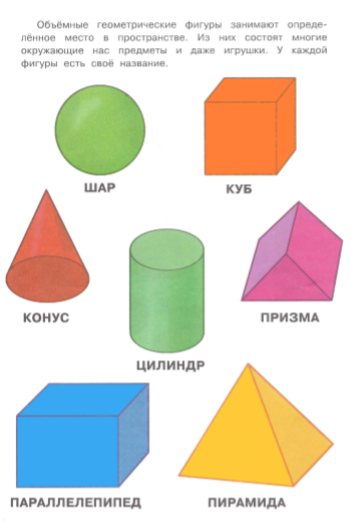
Children often memorize three-dimensional figures by playing with construction sets and building towers. Now is the time to show your child the CUBE, BALL, CYLINDER, CONE, PYRAMID. So, unnoticed by himself, in the game the child receives the knowledge he needs.
It is also useful to find the outlines of already familiar figures in surrounding objects.
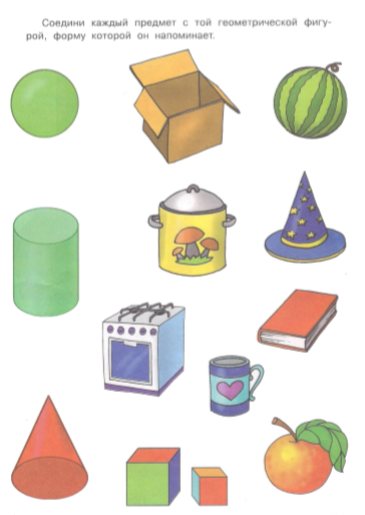
Carrying out simple, but interesting for the child, tasks related to geometric shapes is very useful. This includes the development of spatial vision, logic, and visual-figurative thinking. Not every child can cope, for example, with such a simple task as COLORING THE FIGURES SO THAT ONE OF THE SPECIFIED FIGURES LYES ON TOP. The simplest version of this task is just two figures.
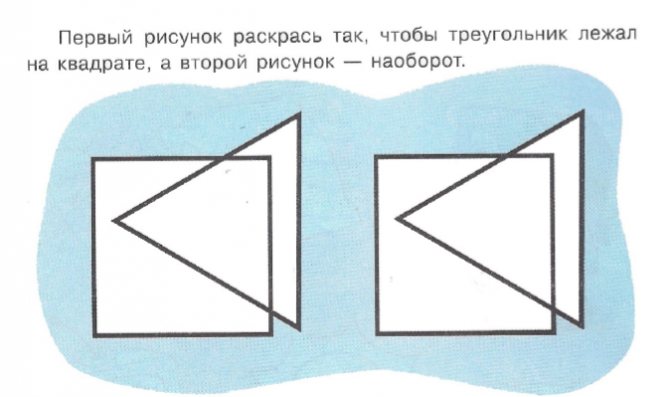
Also a common task in school is counting certain figures. The difficulty is that the child often names only those figures that are clearly visible, without taking into account the overlap.
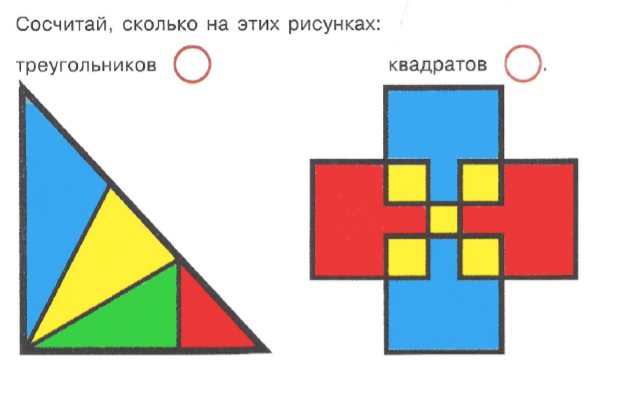
These pages are taken from my book "Fascinating Geometry".
In this book you will find many interesting educational tasks with flat and three-dimensional figures.
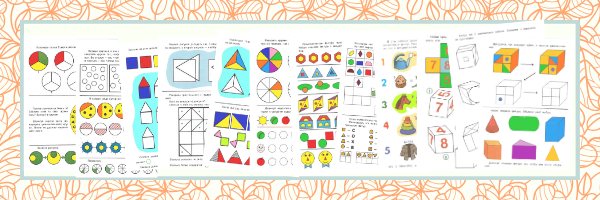
The book introduces children in a fun way to the basics of geometry: flat and three-dimensional geometric shapes. All tasks are playful and entertaining. Aimed at development:
- the child's mathematical abilities;
- spatial imagination;
- logic;
- thinking;
- fine motor skills of the hand.
The book has 60 pages. The educational tasks presented in the book will be interesting and useful for children aged 5-8 years. The book can be used to prepare children for school.
The tasks can be printed as many times as you like or displayed on the interactive whiteboard. Tasks that do not require coloring can be completed directly on the computer.
Sincerely, Olga Naumova
